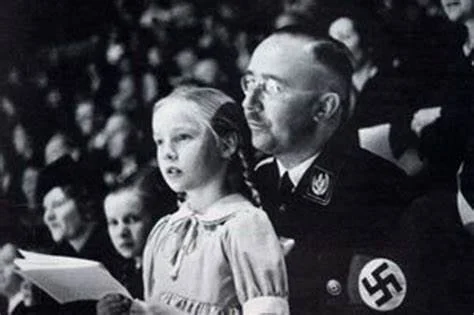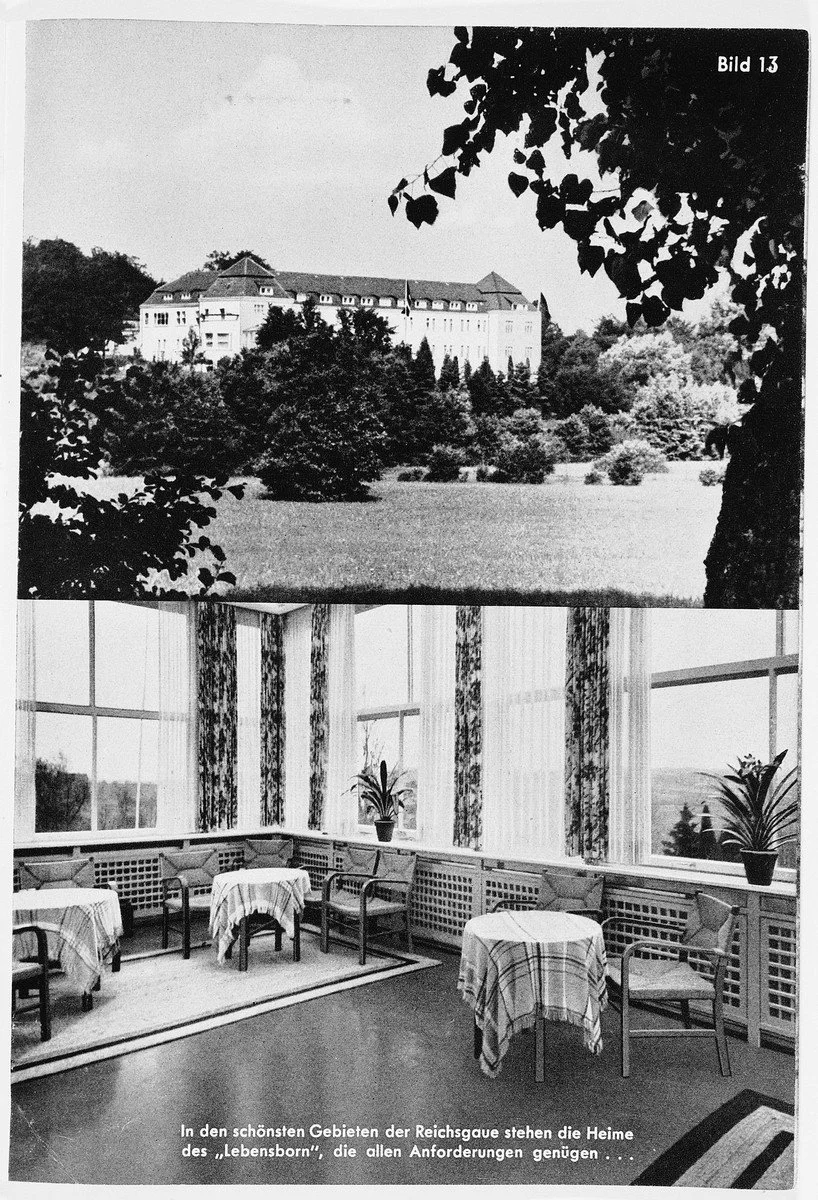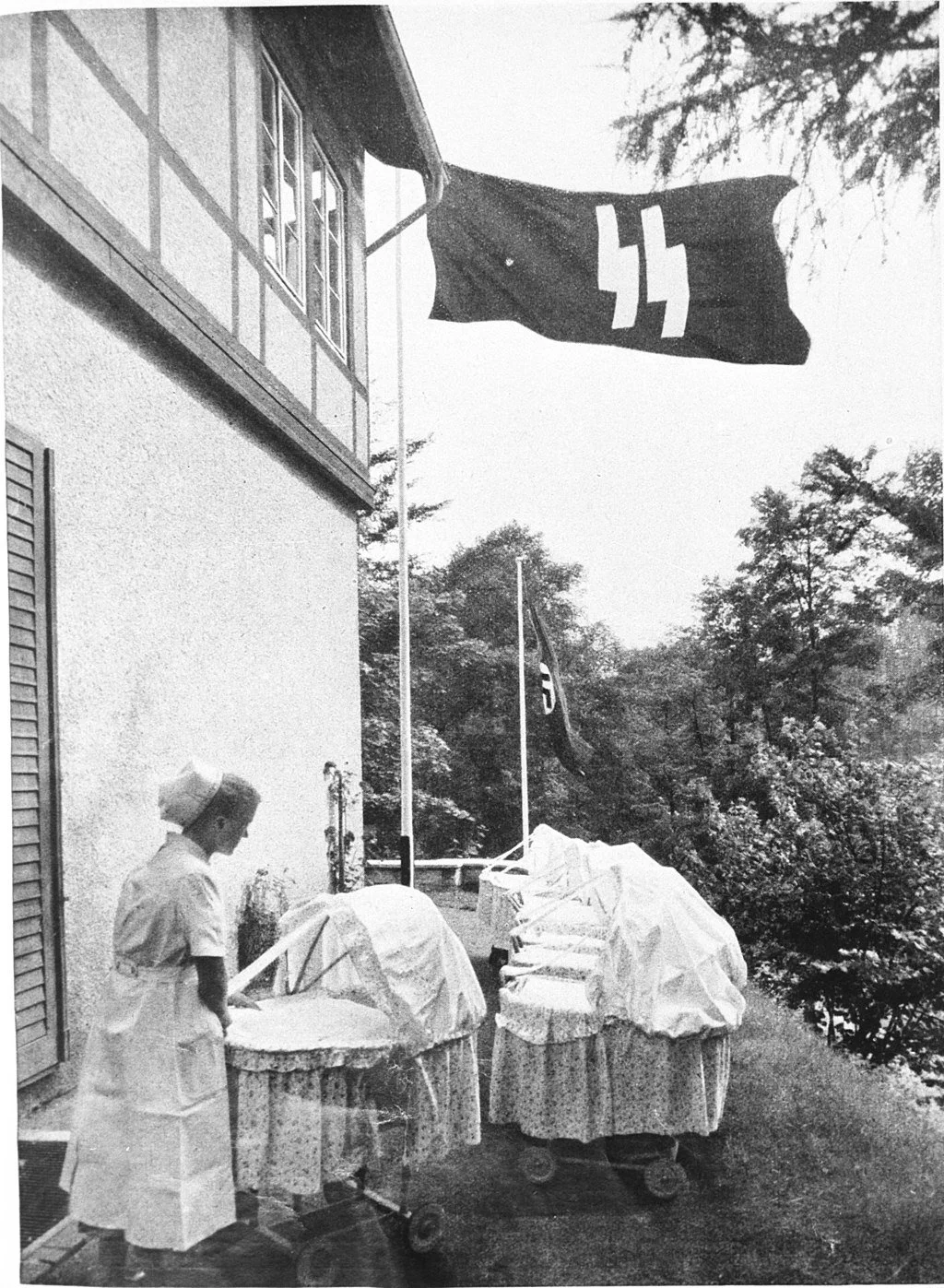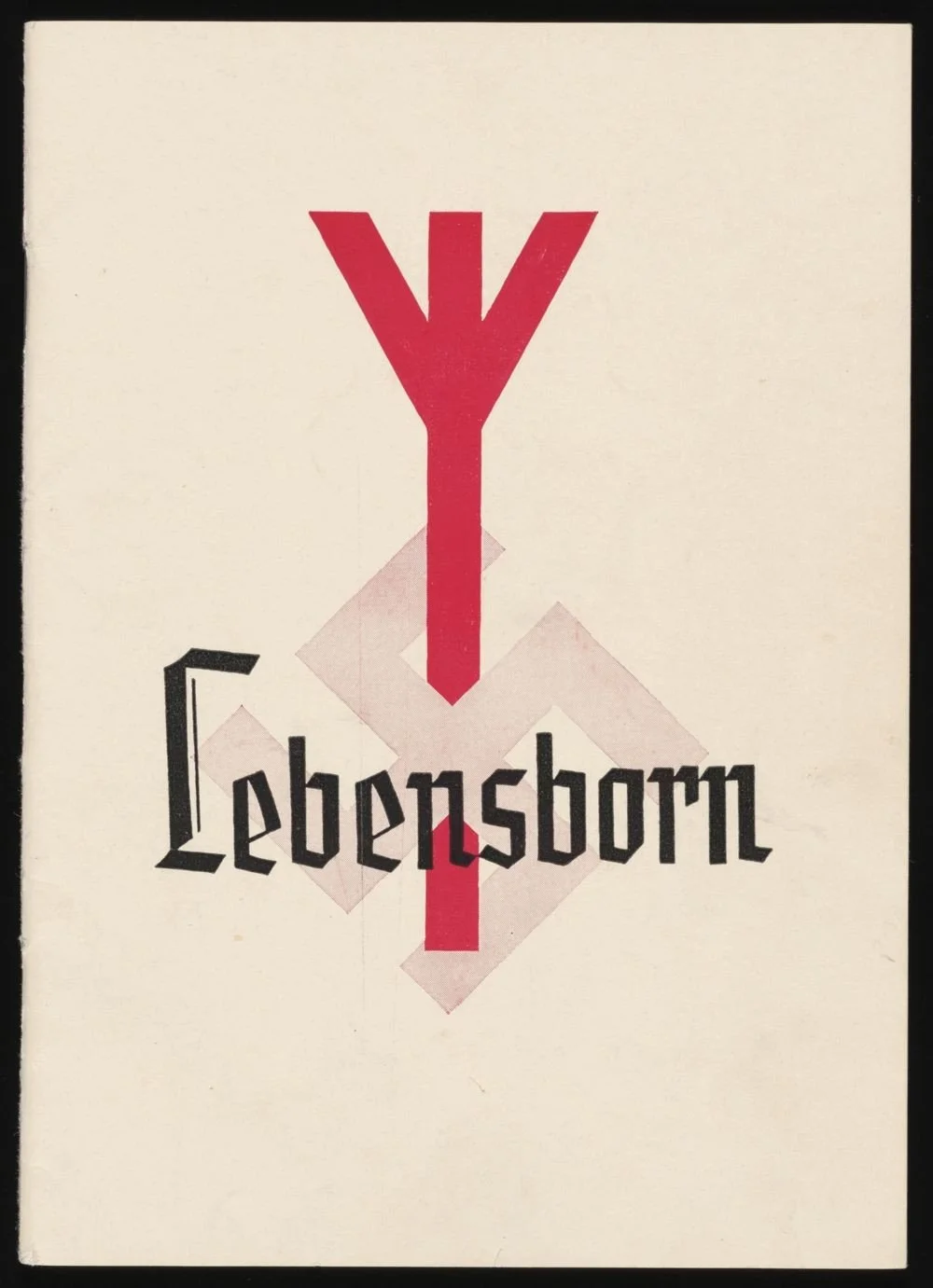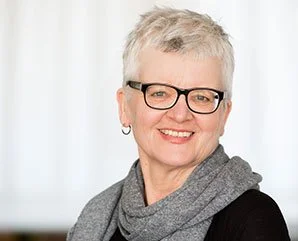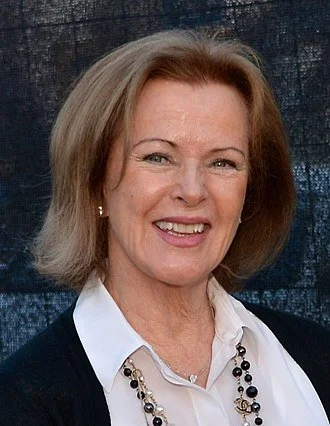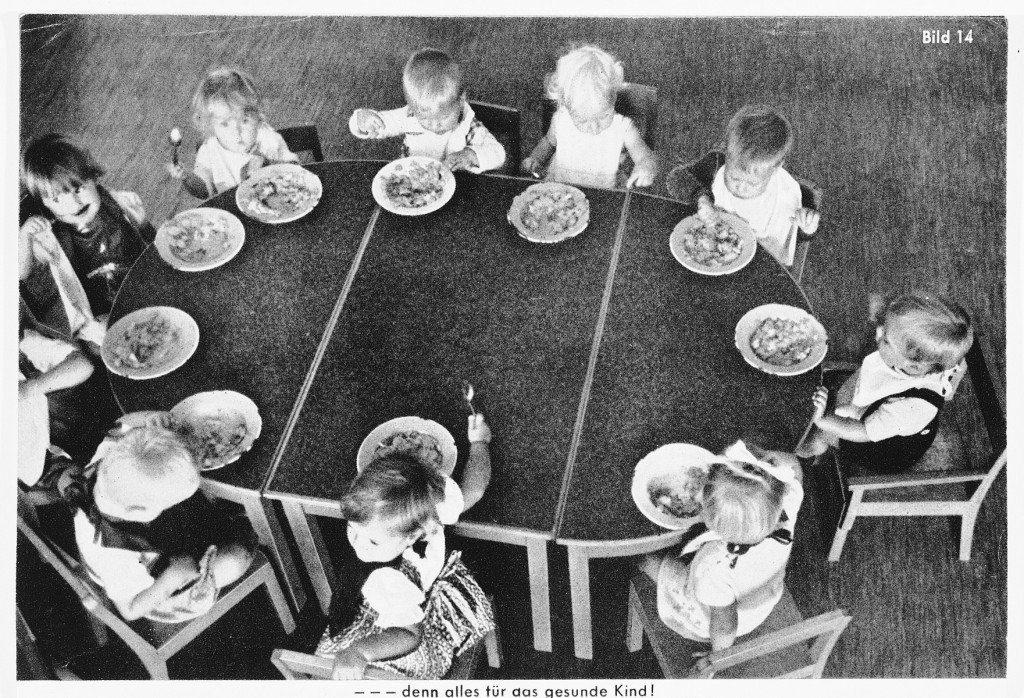
LEBENSBORN
"Spring of Life"
Nazi authorities created the Lebensborn program to increase Germany’s population. Pregnant German women deemed “racially valuable” were encouraged to give birth to their children at Lebensborn homes. During World War II, the program became complicit in the kidnapping of foreign children with physical features considered “Aryan” by the Nazis.
The Lebensborn program was created by the SS in late 1935 in order to promote the growth of Germany’s healthy “Aryan” population. The term Lebensborn itself means “Fount of Life.” The program was designed to be the wellspring of future generations descended from those whom Nazi authorities deemed “racially valuable.” It originally focused on encouraging SS men to have large families and discouraging unmarried, pregnant “Aryan” women from seeking illegal abortions.
The Lebensborn program was heavily influenced by Nazi racial ideology and theories of eugenics. It only accepted healthy applicants who could establish their “Aryan” ancestry. The SS screened individuals' personal medical histories as well as their family records. Applicants could be denied on the basis of their alleged racial “impurity” or health issues. They could also be denied if they had a family history of physical, mental, or psychiatric disabilities. Nazi theories of eugenics advanced the idea that personal character traits like loyalty and bravery were inheritable and could be promoted through the process of selective breeding. In this way, the SS hoped to stimulate the growth of a strong, “racially elite” German population to advance Nazi goals of conquering and colonizing the territories of Eastern Europe.
SS leader Heinrich Himmler believed that the men of the SS were the biological and racial elite of Nazi Germany, and he urged them to have large families. SS members and their brides had to pass medical examinations and establish their “Aryan” ancestry before they could marry. This measure was taken to ensure that their children would be “racially valuable.” Himmler personally oversaw many aspects of the Lebensborn program. He encouraged SS men to marry early and have at least four children. Lebensborn provided financial assistance to SS men with large families, but relatively few received this aid.
The Lebensborn program focused on attracting unmarried, pregnant “Aryan” women. At the time, there were strong pressures against single motherhood in German society. The program offered the mothers financial support and adoption services. It also provided a series of private maternity homes away from the judgemental eyes of family members, friends, and acquaintances. In this way, Himmler hoped to discourage abortions. The Nazi regime strengthened existing German laws that prohibited most abortions. At the same time, though, the regime was operating “hereditary health” courts that ordered abortions and sterilizations for those whom Nazi authorities decided were not of “good racial stock.” Despite the regime's increased penalties for seeking abortions, Himmler estimated there were at least 100,000 “biologically valuable” pregnancies terminated in Germany every year.
SS leader Heinrich Himmler
The Lebensborn homes were designed to be pleasant spaces where women could live comfortably as they received prenatal care, delivered their babies, and recovered from labor. Because the program sought out women eager to avoid the public scandal of an unmarried pregnancy, the homes prioritized anonymity and staff discretion. The Lebensborn homes were typically established on the grounds of private country estates. A program brochure explained that single women must obtain permission from the Lebensborn central office before they could take their newborns home. The program assumed guardianship of unmarried mothers’ children and determined where they would be raised.
Like many aspects of Nazi eugenics, Lebensborn became radicalized in the context of World War II. The perceived need for the program grew as Himmler became worried that the inevitable German casualties would cost the nation thousands of its most “racially valuable” soldiers. The war also provided new opportunities that the program began to exploit. For instance, several new Lebensborn homes were established in German-occupied territories. German SS, military, and civilian personnel also impregnated foreign women. The Lebensborn program assumed control of these children if the mothers’ health, family history, and “Aryan” ancestry could be established.
The Lebensborn program also became involved in the kidnappings of thousands of foreign children. During the war, the SS sought out ethnic Germans living in foreign countries and “repatriated” them to the Third Reich. Thousands of children—mostly from eastern and southeastern Europe—were kidnapped because they had German ancestry or simply the “appropriate racial features.” The Lebensborn program then helped place these children with German families. Adopting families believed that the children had been orphaned by the war.
Two photos showing the exterior and interior views of a Lebensborn home, circa 1933–1943.
Lebensborn home with Nurse
Lebensborn program brochure
Front cover of a brochure advertising the Lebensborn program. The brochure describes the program's maternity homes and requirements that expectant mothers must meet to be accepted.
Himmler had hoped that the program would become the wellspring of future generations of Nazi Germany’s racial elite. However, Lebensborn disappointed these expectations. Although the program’s homes claimed to uphold the highest standards of modern medicine, serious complaints about the quality of medical care emerged. And because the program relied on its privacy, it did not advertise openly. As a result, the program had trouble attracting eligible women. Himmler had estimated that 100,000 “biologically valuable” German women obtained abortions illegally each year, despite increased penalties. However, only around 7,000 children were born into the Lebensborn homes during the program’s nine-year-long existence. Lebensborn ultimately fostered many more kidnapped foreign children, although the precise numbers are difficult to establish. The legacy of the Lebensborn program includes broken homes and devastated parents. It also left a generation of children forced to contend with identity crises as well as the social disapproval that often accompanied their association with a Nazi eugenics program.
Gerd Fleischer (born 17 September 1942) is a Norwegian human rights defender. Her activism stems from her experience as a war child, with a Norwegian-Sami mother and a German father.
Norway
in Norway the Lebensborn registers, which are more complete, show some 12,000 babies came into the world there fathered by members of the German occupying forces.
Norway was one of the center stages of the program and the Nazis set up 10 maternity homes there. The Norwegians came closest to the Nazis' Aryan ideal -- namely blond and blue-eyed. Himmler was eager to encourage the production of babies of mixed German and Norwegian parentage.
Because Nazi Germany saw Norway as a country filled with "blood brothers and sisters," the occupation of the country was generally much less harsh than in other places. At the time, Norway had a population of three million and there were some 400,000 German soldiers stationed there. A good deal of mixing took place and the Lebensborn homes were very willing to pick up where the German soldier left off.
But while the occupation might have been relatively easy, for Norwegian mothers and those children of German soldiers born there, many in Lebensborn homes, the post-war period was a nightmare.
Gerd Fleischer is the treasurer of the "Lebensborn League of Norwegian War Children," an organization which offers support for its members and seeks compensation from the Norwegian government for its dealings with children born of German fathers during the occupation.
Her mother fell in love with a German soldier in 1941 and Gerd was born one year later. Although her father left the country with the retreating German forces, her life was relatively happy until the age of seven, when she started school. It was then that she learned about the intense hatred in Norwegian society toward Germans and anything to do with them, including their children.
"The first time I was called 'German whore' at school, I didn't know what it meant," she said. "My mother talked to me about my father, but other mothers didn't want to admit to anything. We were their shame."
What has made life bearable for many of these Lebensborn children who still have difficulties in their personal and professional lives is their willingness to find one another and come forward with their stories. They have called on the Norwegian government to provide compensation for its discriminatory handling of them after the war. The government has not met all their demands, but has offered a small amount of compensation.
In Germany, the story is different. Until just recently, there was no organization of former Lebensborn children. Only recently have there been tentative movements by a few to set up an organization similar to the two now existing in Norway. Because of the destruction of the Lebensborn files at the war's conclusion, many people do not know who their fathers are. Many of their mothers, if they are still alive, are still reluctant to talk about that time in their lives.
"A lot of that is bound up with the feeling of being a perpetrator somehow," Schmitz-Köster said. "Many of the children in Germany had fathers who were in the SS and were war criminals. That's completely different than the situation in Norway, for example, where most are children of simple German soldiers. Here there are still strong feelings of guilt."
But she said after having written her book, she received many calls from people wanting to know more, and who were interested in researching their own pasts. According to her, there is still a lot about the Lebensborn era that is shrouded in secrecy and shame, and is just now coming to light.
"There is still a great need among many of these children to know more about their history," she said.
Dorothee Schmitz-Köster
“From time to time there are news and new insights about the Lebensborn and its consequences. A hitherto unknown Lebensborn "child" asks to clear up a void in his childhood. That's when I discover documents with new information in the archive. Someone sends me a TV tip or a link to a newspaper article ...
I would like to pass on such information to those affected, to those who are interested, to those who are committed”.
Dorothee Schmitz-Köster
One of the Lebensborn
Nazi Breeding Farms - Lebensborn
